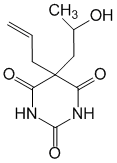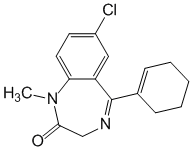Riboflavin
26 Dec 2016
Riboflavin (Lactoflavin, B2 vitamin) is one of the most important water-soluble vitamins, a coenzyme of many biochemical processes. Riboflavin has bright yellow color and a characteristic vitamin smell.
Riboflavin in sport
Riboflavin participates in formation of energy in three main processes:
- Glucose metabolism
- Oxidation of fats
- Transfer of ions of Hydrogenous in Krebs's cycle
Participation of Riboflavin in synthesis of a protein is of special interest for bodybuilders. There is dependence between entering of Riboflavin in an organism and muscle bulk. One research showed what women need high doses of B2 vitamin, for restoration after the trainings. One more research established that Riboflavin in the form of additional additive improves muscular activity at sports activities therefore it is often included in sports delivery.
Deficiency of Riboflavin
Riboflavin is necessary for formation of erythrocytes, antibodies, for a regulation of body height and genocidal functions in an organism. It is also necessary for a healthy skin, fingernails, body height of hair and in general for health of all organisms, including function of a thyroid gland.
External implications of a failure of Riboflavin at the person are lesions of a mucosa of labium with vertical cracks and an exfoliating of an epithelium (cheilosis), ulcerations in mouth angles (an angular steatites), swelled also reddening of tongue (glossitis), seborrhea dermatitis in nasolabial cord, nose wings, ears, centuries. Often also changes from organs of vision develop: a photophobia, cornea vascularization, conjunctivitis, keratitis and in certain cases is a cataract. In some cases at an avitaminosis the anemia and nervous breakdowns which are shown in muscular delicacy, thermalgias in legs, etc. take place. You can try Cerebramin.
The main reasons for a disadvantage of Riboflavin at the person is insufficient consumption of the products containing this vitamin; the wrong storage and preparation of the products containing this vitamin owing to what the content of vitamin sharply decreases; chronic diseases of digestive tract, reception of medicines, being antagonists of Riboflavin.
Food sources of Riboflavin
Riboflavin contains in the following products (in decreasing order of its quantity in 100 g of a product): liver and kidneys of 2.80-4.66 mg, yeast of 2.07-4.0 mg, almonds of 0.80 mg, eggs of 0.30-0.80 mg, champignons of 0.4 mg, cottage cheese of 0.30-0.50 mg, broccoli of 0.3 mg, white cabbage of 0.25 mg, buckwheat of 0.24 mg, milk of 0.13-0.18 mg, meat of 0.15-0.17 mg, and also: the peeled rice, pasta, white loaf, the majority of fruit and vegetables in number of 0.03-0.05 mg.
Content of B2 vitamin in some foodstuff
Product / Content of B2 vitamin, mg / 100 of a product
Beef liver / 2.19
Yeast baking (pressed) / 2.0
Kidneys / 1.6-2.1
Liver / 1.3-1.6
Cheese / 0.4-0.75
Egg (yolk) / 0.3-0.5
Cottage cheese / 0.3-0.4
Spinach / 0.2-0.3
Veal / 0.23
Beef / 0.2
Buckwheat / 0.2
Milk / 0.14-0.24
Cabbage / 0.025-0.05
Potatoes / 0.08
Salad / 0.8
Carrots / 0.02-0.06
Tomatoes / 0.02-0.04
Recommended doses
The recommended daily dose averages 1.3 mg, for the adult. In case of occupations bodybuilding, requirement increases up to 3-5 mg. Riboflavin has no toxicity and doesn't cause hypervitaminoze in case of the use inside as its low solubility interferes with its excessive absorption from intestines.
Information from the encyclopedia of sport
Riboflavin. At the heart of chemical structure of Riboflavin (Vit. B2) lies system of izoalloksazin. As a side chain its molecule contains remaining balance of pentatonic alcohol of ribitol owing to what vitamin was called Riboflavin.
In a human body Riboflavin arrives mainly with meat and dairy products, it contains also in fish, yeast, peas, germs and covers of cereal cultures.
Medicines: Riboflavin and Riboflavin mononucleotide.
Pharmacokinetics. Riboflavin is absorbed in intestines and is subject to phosphorylation in a mucous membrane of guts, cells of a liver and blood. At the same time two kofermentny forms are formed: flavinmononucleotids (FMN) and flavinadenindinucleotids (FAD).
Riboflavin accumulates mainly in a liver, kidneys and adrenal glands. In fabrics Riboflavin can be in a free condition, however its nucleotides (FMN and FAD) are reliably connected with proteins of an apoferment. Riboflavin from an organism is emitted with kidneys, painting urine in light yellow color.
Pharm dinamics. Riboflavin as prostetic group flavin (yellow) enzymes performs function of a transporter of hydrogen in the course of tissue respiration and regulates oxidation-reduction reactions. Coenzymes of biological oxidation are intermediate carriers of hydrogen from OVER to tsitokhroma, are a part glutathione-reductase enzyme which translates the oxidized glutathione in got into condition.
As a part of oxidase amino acids Riboflavin takes part in synthesis and exchange of amino acids. In general he normalizes exchange of fats and proteins, plays an important role in maintenance of normal visual function of eyes (synthesis of flasks and rods), and participates in function of mucosaТs, skins and in hemoglobin synthesis. Enzymes which incorporate Riboflavin participate in exchange of other vitamins: pantothenic acid, pyridoxine and folic acid. Riboflavin is necessary for coli bacillus vital activity, and also facilitates iron absorption, increases fastness of an organism to hypoxia and other adverse factors.
Riboflavin mononucleotide is a product of phosphorylation of Riboflavin, ready form of coenzyme.
Precursory symptoms of failure of Riboflavin in organism is dysfunctions of CNS (hypochondria, hysteria, depression), decrease further secretion of a gastric juice and activity of enzymes of intestines, appetite worsens, body weight decreases, the feeling of fever in a body appears, there are cracks in angles of a mouth and on labium (an angular stomatitis), tongue becomes dry, bright red color (glossitis), there is an acute pain in eyes, a photophobia, develop keratitis, konyyuktivit, phacoscotasmus (cataract).
Indications to use: hypo - and ariboflavinosis, diseases of eyes (keratitis, konyyuktivit, helcomas, cataract) and skins (seborrheal eczema, a systemic lupus erythematosus), combustions, a frostbite, a myocardial dystrophy, chronic enteritis, radial illness, failure albuminous and excessive carbohydrate deliveries.
Riboflavin the mononucleotide is used in ophthalmology, dermatology, neurology.
Side effects are observed at over dosage. Riboflavin the mononucleotide causes morbidity in injection site. Treatment by high doses of vitamin owing to its bad solubility can cause an occlusion of canaliculus of nephron.
Riboflavin (B2 vitamin drug). Investigated influence of additional consumption of Riboflavin on physical efficiency of 14 Canadian swimmers of high qualification with the normal status for this vitamin and the regimen of its consumption with a nutrition meeting the recommended standards. Surveyed one subgroup for 16 Ч 20 days accepted it in a dose of 60 mg a day whereas for surveyed other subgroup drug replaced placebo. Physical working capacity was estimated in the swimming test consisting in sixfold overcoming 50-meter distance freestyle. Besides, in the tredmilny test defined the maximum aerobic power and a ventilating anaerobic threshold. Drug considerably increases visual acuity and fastness to a hypoxia; at the same time consumption of Riboflavin in long tests didn't affect indicators of its level in a blood, on indicators of physical working capacity. The conclusion was drawn that in the course of the sports training swimmers completely can support the normal riboflavin status without additional consumption of this vitamin. Besides, it is obvious, it is necessary to fulfill its dosages for the athletes specializing in firing and also in other sports, taking into account anti-hypoxemic effect.
B2 vitamin in itself has no anabolic activity, and its forms Riboflavin a mononucleotide and Flavinatum which in Ukraine aren't issued Ч possess. Drugs activate the enzymes participating in synthesis of amino acids, lipids and carbohydrates. They normalize the course of oxidation-reduction processes, cholesterol exchange, strengthen hemoglobin synthesis, accelerate iron absorption, and improve vision. For the growing organism these drugs are an irreplaceable growth factor.

 Cart
Cart








